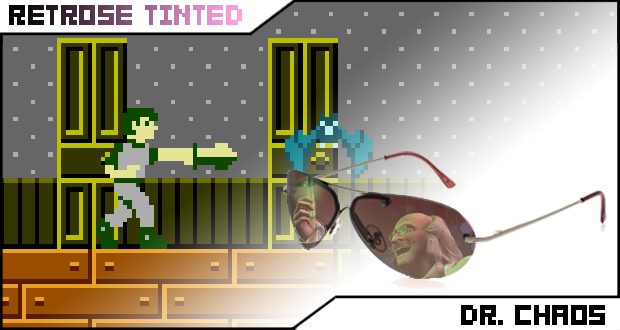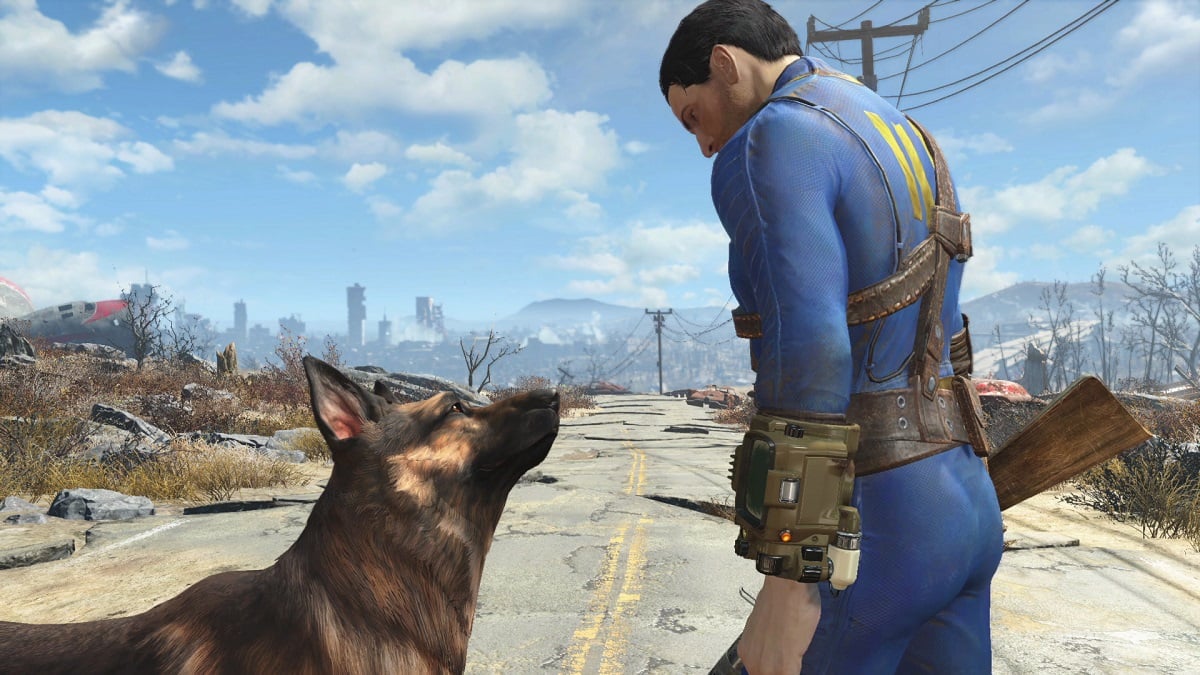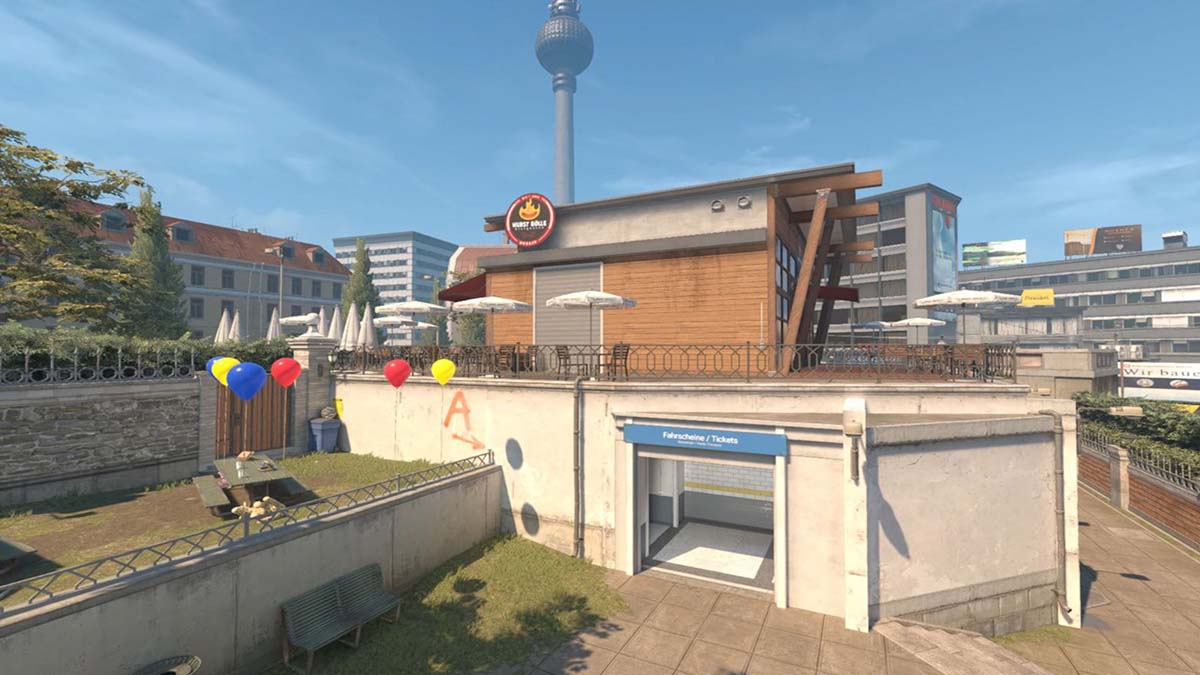There are a lot of games out there which I have played and not completed. The list seems to be ever-growing, in fact, as I have less time for the practice than I once did. It’s far less common that I play a game and never get anywhere at all.
One such game is Dr. Chaos. It became something of a mild obsession of mine, with its distinctive cover art and absolutely mystifying gameplay. At no point in the countless times that I attempted to play this title did I ever meet with even the most basic of successes. I’d play for a bit, feel (correctly) like I was not making any progress and then move on to something else.
Not this time. I’m an adult, God damn it, and I should be able to complete any game I put my mind to. And, if my mind fails, there is always the internet.

Dr. Chaos is the story of Michael Chaos and his brother, mad physicist Dr. Ginn Chaos. Michael hasn’t heard from his brother in some time. That’s probably because Dr. Chaos has been conducting experiments in teleportation from a remote mansion and they’ve gone horribly awry, breaking down the barrier between two worlds and allowing a flood of monsters through. Oh, that wacky Dr. Chaos!
As Michael, players must explore Dr. Chaos’ house and find the warp zones where monsters have absconded with parts of a super-laser that can be used to solve the whole problem. No, I don’t know how it works. I am neither a mad physicist nor a game designer. Somehow, putting together this laser and using it to defeat the monster holding Dr. Chaos hostage will solve everything.
The gameplay is split between two modes. Side-scrolling action is where you’ll spend the majority of your time, if you’re lucky. Exploring the hallways of the mansion and fighting through warp zones all take place in a side-scrolling environment. Enemies abound throughout them, with simple foes like rats and bats in the mansion, while other, stranger and more deadly monsters exist in the warp zones.

One thing you’ll notice right away about the side-scrolling levels is that enemies are a bitch. Killing a lesser enemy should keep them out of your way so that you may pass through unscathed. Not so here, as beasties will often respawn a second after death and usually right about where you’re standing when they do it. Add that Michael’s only starting weapon is a knife with poor range and accuracy, and you’re likely to find yourself hurting before too long.
The other mode is first-person exploration. Anytime you leave the hallway of the mansion via a door, you’ll wind up in this perspective. It is not dissimilar to the first-person sections of The Goonies II, in that you can hit walls, open doors and cabinets and move around. The difference is that it’s a whole lot less frustrating in Dr. Chaos, mostly because the map actually makes sense. Passing through the wall of a room into another and then through that room’s door will put you back in the hallway, outside the door which is next to the one you went into in the first place. The map design is logical, which is a very nice thing.
Another really cool feature of the first-person areas are the monsters. You don’t fight monsters in these rooms, you run from them. As you’re exploring rooms and searching cupboards, occasionally a monster will leap out of somewhere and scare the bejesus out of you — and probably Michael. The monster forces Michael out of the room and into the hall, where they must be defeated before Michael can enter a door again.

These rooms serve a few purposes. They are the locations of ammunition for the two types of guns Michael can use. It’s also the only time (apart from a few boss fights) where you can restore lost health by picking up potions lying in cabinets and on couches. Some areas of the mansion can only be accessed by passing through the rooms, either by using doors or punching holes in the walls. And, finally, they are where Michael enters the warp zones he must explore.
Here’s the funny thing about warp zones: they’re invisible. In order to know if a particular wall of a particular room has a warp zone in it somewhere, you have to have a special device. It won’t tell you which warp zone it is. It doesn’t tell you where on a wall the warp zone is. It doesn’t even say if a room that you’re in has one. It only indicates whether or not a warp zone exists somewhere on the wall that you happen to be looking at right this instant.
So, where is this wonderful device that provides you with the minimum amount of information possible while still being useful? It’s in the first warp zone, which is hidden on a wall that you cannot readily identify because warp zones are invisible.

That is the reason I never progressed particularly far in Dr. Chaos. It isn’t that the game is hard. There are some aspects of it which are challenging, sure, but it isn’t particularly difficult by NES standards. No, it’s because they hid the entrance to the first level and I never found it.
Once you’ve found the device, however, the game opens up into a less linear format. Warp zones after the first can be attempted with some sleight variety in their order. In the warp zones, Michael will find special equipment to help him navigate through other warp zones. Most require that you have at least one of the items, so there are restrictions, but you can tackle a few of the levels early or late, depending on your preference.
It also becomes fun instead of constantly frustrating. It can be a hassle to travel between some rooms and into some warp zones simply because you have to make a hole in a wall but you can only do it in this one specific area that you’ll have to hit all over the wall to find, but the warp zone detector removes what would be the bulk of guesswork in this regard. This allows you to explore and feel like you’re getting somewhere
The warp zone levels are fairly well-designed too. They can be a bit punishing at times, as almost all of them have a section of dead-end path where you may be forced to backtrack more than once if careless, but they’re solid.

Bosses, however, are not. It’s hard to tell if you’re dealing them damage most of the time, as there’s no flash or progressive indication that you’re hitting other than the sound effects. Most are only vulnerable at specific times, with very brief windows in which you can attack. Some have to be attacked in specific ways, such as the boss who only takes damage from grenades. And then, to cap it all off, the final boss is an absolute wimp in comparison to most of what you’ve fought up to that point.
Dr. Chaos is enjoyable, but only with an FAQ at the ready to get you through the game’s introductory level. Beyond that, it’s a solid NES game. It may be unfair on a few points and flawed in a few others, but it’s fun for the most part and worth a look.




